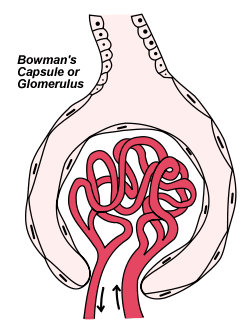|
EXERCISE
EFFECTS ON DIABETES MELLITUS AND ADAPTED
PHYSICAL ACTIVITY STRATEGIES
written
by: Eli
Goodman, Undergraduate Student,
University of Florida (biography)
 Diabetes
mellitus is a disease that causes in
irregularity in insulin production or
decrease in insulin sensitivity. There
are two different types of diabetes;
type I and type II. Diabetes
mellitus is a disease that causes in
irregularity in insulin production or
decrease in insulin sensitivity. There
are two different types of diabetes;
type I and type II.
Insulin
dependent diabetes mellitus, or Type
I diabetes, is caused by an inability
to produce insulin in the pancreas.
Type I diabetes is an autoimmune disorder
where the body attacks the insulin producing
cells in the pancreas, halting the production
of insulin. Type I diabetes is commonly
found in children. The causes are not
well understood, although they are presumably
genetic and environmental in origin.
The second form of diabetes is Type
II, and it stems from developing a resistance
to insulin. Type II diabetes appears
largely behavioral in origin. Problems
with insulin production, or sensitivity,
are serious matters because insulin
regulates the amount of blood sugar
or glucose in the blood stream (1).
Amazingly, through exercise one may
decrease, prevent, or even reverse the
effects of diabetes, especially type
II (2).
The
physiology behind type I diabetes is
very simple. The pancreas is attacked
and destroyed by the immune system.
It has yet to be determined what environmental
factors may trigger the onset of type
I diabetes, but the literature is confident
that a genetic predisposition is a strong
influencing factor. When the pancreas
is attacked by the immune system it
stops producing insulin. A lack of insulin
can cause another host of problems because
insulin regulates important functions
in the body.
 Insulin
is an important hormone because it regulates
the amount of glucose that is going
into a cell. Without glucose entering
the cell the cells become stressed for
nutrients. Glucose is an important nutrient
because it is the most basic form of
sugar and a large contributor to the
fuels necessary for cellular work. Not
only does the decrease in insulin decrease
the amount of nutrients received by
the cells, it also increases the amount
of glucose in the blood stream. Insulin
is an important hormone because it regulates
the amount of glucose that is going
into a cell. Without glucose entering
the cell the cells become stressed for
nutrients. Glucose is an important nutrient
because it is the most basic form of
sugar and a large contributor to the
fuels necessary for cellular work. Not
only does the decrease in insulin decrease
the amount of nutrients received by
the cells, it also increases the amount
of glucose in the blood stream.
The
blood stream is the transportation system
for nutrients in the body. When glucose
cannot leave the blood stream the glucose
supply-train backs up in the blood stream,
which causes an increase in blood glucose
levels. Having high blood glucose levels,
or hyperglycemia,
presents more physiological stresses
for the body. The large glucose molecules
force their way out of the blood stream
through the kidney to be excreted in
the urine. Their exodus from the blood
through the Bowman’s
capsules, or glomeruli
in each nephron
of the kidney cause damage. The heightened
glucose levels also affect the eyes,
and may cause blindness in a condition
known as diabetic
retinopathy.
Hyperglycemia
can affect tissue circulation (diabetic
angiopathy) so severely that limb
amputations become necessary. Another
condition caused by hyperglycemia is
an inflammation of the nerves that causes
pain called diabetic
neuropathy (4).
Another
way for the body to have high blood
glucose levels is through the second
type of diabetes - type II. The difference
between the types II diabetes and I
is that in type II diabetes the pancreas
is still functional yet the body’s
cells are unable to respond to insulin.
The lack of sensitivity is due to a
decrease in GLUT
receptors in the cell membrane though
a process called down-regulation
(18). The
GLUT receptors are the gateways that
glucose enters into the cell (21).
Environmental factors are a major contributor
to the down-regulation of GLUT receptors.
The major factors contributing to type
II diabetes are; sedentary lifestyle,
obesity, smoking, poor diet, and abstinence
form alcohol (2).
All the contributing factors are based
on behavior. Through behavior modification
one can effectively reduce the risks
and severity of diabetes (22).
The easiest and most effective behavior
modification is to begin to exercise.
The
most important behavior modification
in the treatment of type II diabetes
is an increase in exercise. Exercise
is a very simple life style change that
directly addresses both sedentary behavior
and obesity. The very act of exercising
immediately addresses sedentary behavior
because it is inherent in sedentary
behavior that one is inactive. When
the body becomes active it helps the
body deal with type II diabetes by adding
more GLUT receptors into muscle cell’s
membrane.
The
addition of GLUT receptors into the
muscle cell’s membrane has a huge
effect on blood glucose levels. The
GLUT receptors allow glucose out of
the blood and into the cell to be used
as energy. This drives down blood glucose
levels (14).
This decrease in hyperglycemia is present
from the first bout of exercise (6).
The signals for the increased GLUT receptors
and for muscle contractions are the
same. They are both responsive to calcium.
The calcium is the result of sarcoplasmic
reticulum stimulation (9).
The use of calcium as the signaling
agent for both muscular contractions,
as well an increase in GLUT receptors,
is the reason that exercise is such
a powerful tool in treating type II
diabetes (14).
Although
exercise is a great tool in mitigating
type II diabetes, it is less effective
at treating type I diabetes. Although
there is still an increase in GLUT receptors
in response to exercise, it is less
effective because there is no insulin
in the blood stream because of the non-functioning
pancreas. While exercise helps maintain
blood glucose levels, a type I diabetic
will always need insulin by injection
(18). Even
though type I diabetes cannot be controlled
as effectively with exercise as type
II, it does not mean that people with
type I diabetes should not live an active
life style. By keeping active they promote
a healthier life for themselves and
their peers. Being active will also
keep them from falling victim to some
primary risk factors for type II diabetes
such as obesity and sedentary lifestyle.
In fact exercise is not just for diabetics,
everyone in the world should try to
lead an active life.
Exercise
is also effective at mediating the risk
factor of diabetes such as obesity.
With increased activity one’s
caloric expenditures also increase.
If men can get their percent body fat
below 25%, or a woman below 33% fat,
then they are no longer obese
(15). As well as no longer being
obese, they will have eliminated a major
risk factor for diabetes.
The American College of
Sports Medicine has constructed guidelines
for the amount of physical activity
needed to maintain a healthy life. They
suggest 30 minutes of moderate intensity
activity on most days of the week
(7). This simple guideline has
shown improvements in body fat percentages
of sedentary people. Other studies have
shown that modest additional exercise
over the ACSM exercise recommendations
elicits an even greater response in
fat loss, even if diet remains constant
(5). It
has also been demonstrated that even
a single bout of exercise is enough
to aid in care for diabetes by increasing
glucose tolerance (6).
Through exercise people
confront two of the major contributors
to type II diabetes at the same time.
If everyone were to exercise more, type
II diabetes would not be an epidemic
with 23.6 million people currently diagnosed
in the USA (17).
This problem is growing into a global
epidemic with rates worldwide expected
to double in the next 20 years (16).
In the quest for increased
activity in diabetic populations some
adaptive strategies may have to be taken.
People with diabetes have to be more
careful about what they have consumed
before exercise and during exercise.
As well, persons with diabetes have
to take into account how much insulin
they have given themselves by injection
when they begin to exercise. Having
too much insulin in conjunction with
too much exercise may lead to dangerously
low blood glucose levels. Low blood
glucose levels are dangerous because
they can cause seizures, coma and death
(19). To
ensure that blood glucose levels were
optimal it should be advised that diabetics
check their blood sugar before, during
and after exercise. In terms of exercise
intensity diabetics should “expend
~1.7 – 2.1 MJ/exercise bout on
three but preferably five days a week”
(10). It has also been demonstrated
that aerobic exercising at 50 –
80% VO2 is also helpful (20).
As well, resistance training using the
ACSM guidelines is recommended for both
trained and especially for detrained
people (11).
Other
than paying close attention to their
blood glucose level it seems people
with diabetes should exercise as much
and as vigorously as possible within
their limitations. Exercise is very
beneficial to the maintenance of blood
glucose levels, and when coupled with
a careful diet the combination can reduce,
prevent, and reverse the effects of
diabetes. It can also help control diabetes
to lessen the dependency of drugs and
insulin injections. Fortunately, the
adaptations are small and the gains
are big for people with diabetes when
they exercise.
references
biography:
Eli
Goodman is a personal trainer in
Miami. He graduated from the University
of Florida with a B.A. in Science in
Applied Physiology and Kinesiology.
After working many physical jobs and
being involved in several sports, Eli
decided that the human body was his
passion. During college Eli interned
as a physical therapy technician where
he decided he wanted to help people
before they were hurt. He is currently
working as a personal trainer at Equinox
in Coral Gables.
|



